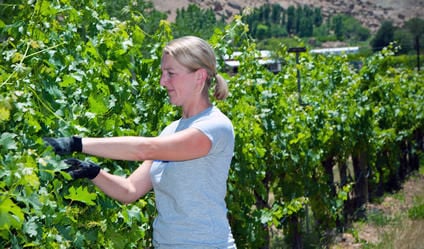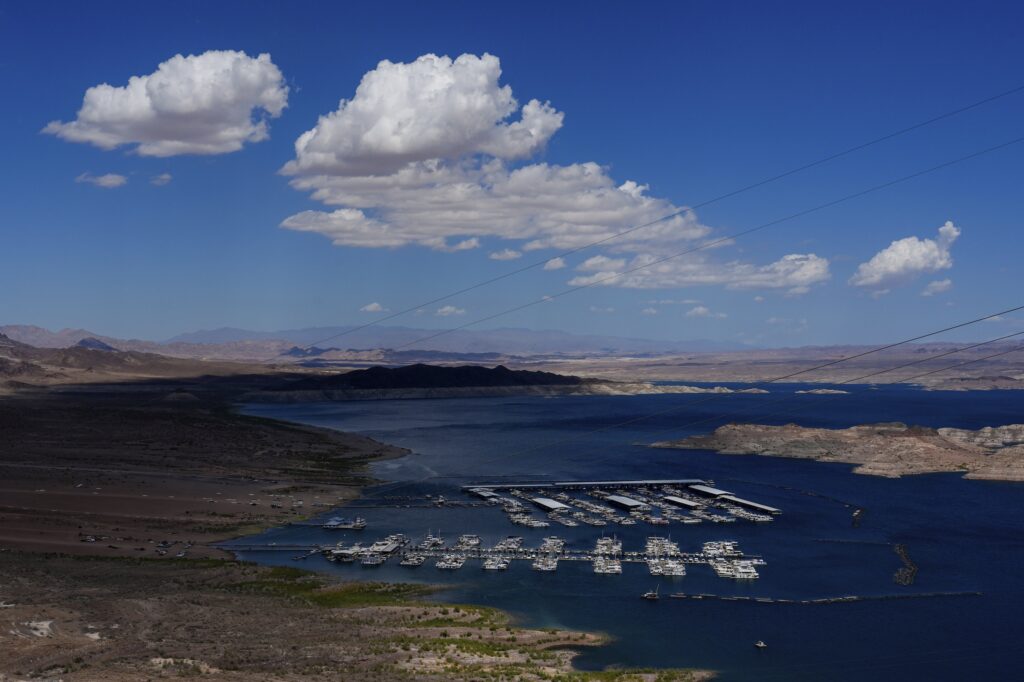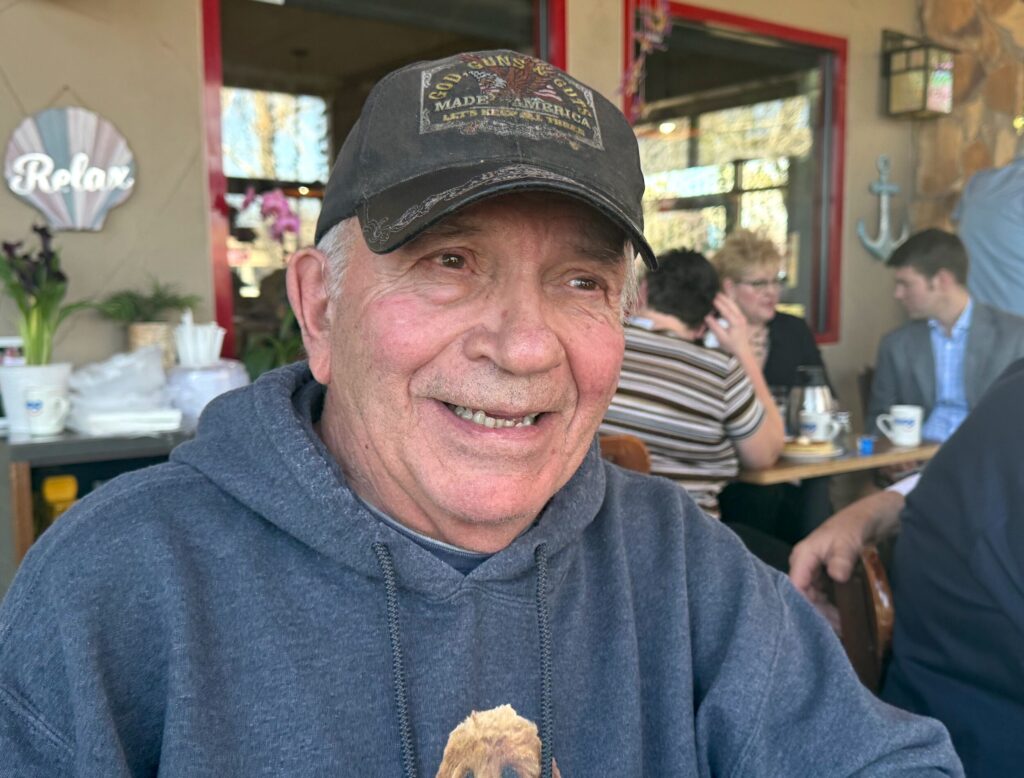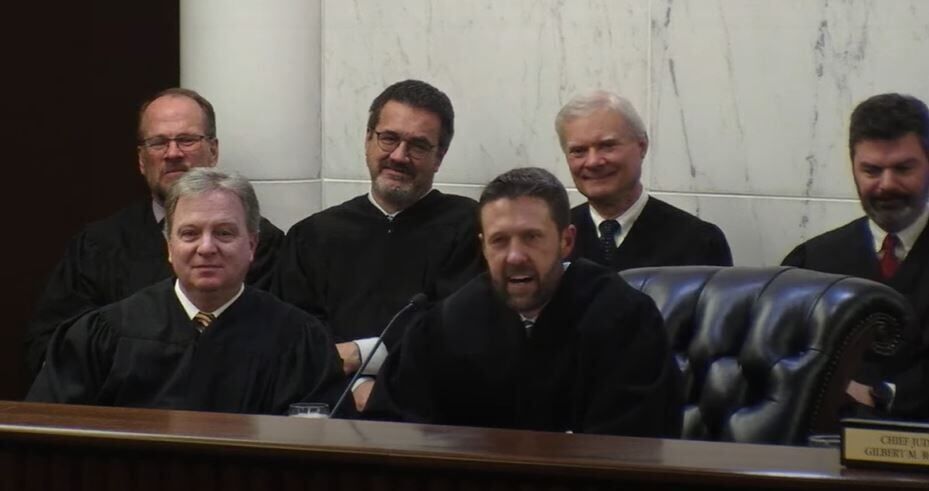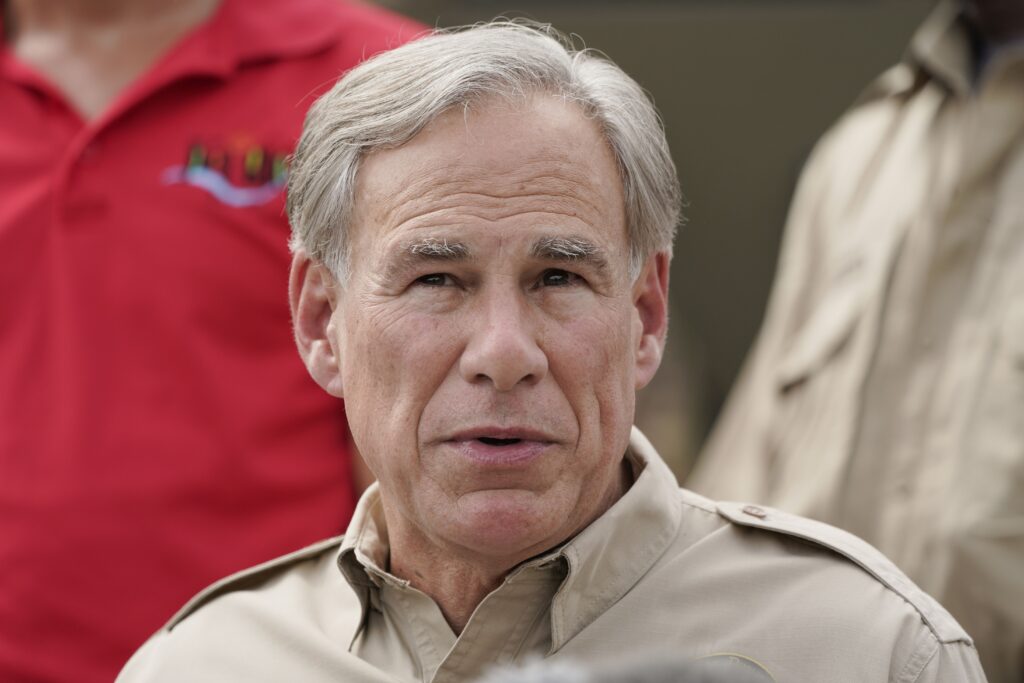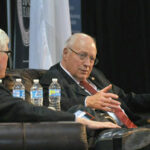Colorado’s winegrowers meet the challenge of high altitude farming
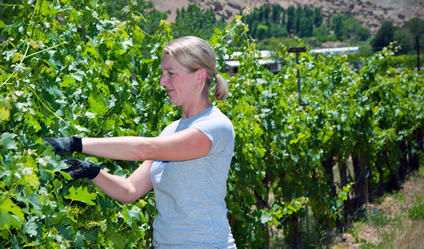
Colorado’s wine industry has really grown in the last 25 years. In 1990, there were only five licensed wineries in the state, four in the Grand Valley. Today there are over 130. It is understandable most of the attention about that growth has been on the winemakers and winery owners.
This month, though, I’m focusing on the building blocks of Colorado’s wine industry: its vineyards, grapes and the people who grow them. To do this, naturally I turned to the Grand Valley, Colorado’s first and largest American Viticultural Area. First recognized by the federal government in 1990, about four-fifths of all the state’s wine grapes are grown there. Since that time, vineyard acreage has increased almost five-fold.
Of course, the Grand Valley has long been recognized for its succulent peaches and other fruit. In recent years, though, wine grapes — even with the challenges presented by high-altitude farming — have become nearly as important of a crop.
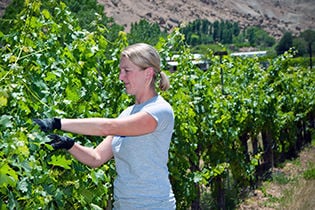
Jennifer Christianson prunes grape vines in the shadow of the Bookcliffs, where Canyon Wind Cellars grows grapes suited to the Grand Valley’s micro-climate. She and her husband, Jay, started work in the last decade at the winery, which was founded in the 1990s by his parents, Norman and Ellen Christianson.Photo courtesy Canyon Wind Cellars
Nancy Cole
Valley native Kaibab Sauvage grew up on a peach orchard but since 2000 has converted the property to grapes and contracted to farm additional vineyards around Palisade. “We now only have one acre of naturally grown Early Redhaven peaches,” he told me.
Mr. Sauvage grows eleven varieties and sells grapes — he says petite verdot, malbec, syrah and viognier are his most successful — to 15 wineries. What, no merlot, no chardonnay? “I’ve always tried to plant the trends I see coming, particularly lesser-known varieties, because consumers like adventure. I planted malbec 10 years ago, before it became popular.”
One of his neighbors is Canyon Wind Cellars, near the eastern mouth of the valley. Norman Christianson, looking to retire from a geology career, and his wife, Ellen, planted their first vineyard in 1991, built their winery in 1995 and released their first wines in 1996. Truly a family-owned operation, son Jay has served as winemaker since 2007 and was joined by his wife, Jennifer, in 2009. Today, Canyon Wind is an estate winery, meaning they grow all their own grapes.
Jay emphasized the specialness of this place for growing high-altitude wine grapes. “We’re at over 4,700 feet but it’s a protected, safe spot.” Or, as Mr. Sauvage told me, “Jay is in the perfect place.” Canyon Wind is named for the mountain breezes that moderate the climate of the eastern valley.
Winds moving through Debeque Canyon are compressed and warmed to reduce crop-killing frosts. However, as the winds move further west and the valley spreads out, the warming effect is diminished. Frost, which shortens the growing season and often damages the crop, remains the biggest worry the farther west you go. It has an impact on the quality, reliability and supply of grapes, which can have drastic affects on profitability.
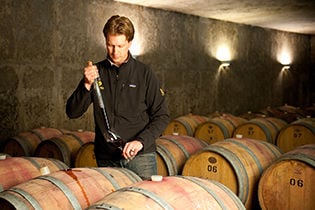
Jay Christianson is at work among the wine barrels at Palisade’s Canyon Wind Cellars, an estate winery that grows all its own grapes near the mouth of the Grand Valley.Photo courtesy Canyon Wind Cellars
Nancy Cole
That’s why most vineyard owners realize they must diversify to make a decent living. Sauvage’s company also offers various vineyard construction services. The Christiansons quickly realized they had to add their own winery. Jay noted they have also built a space to host events and weddings.
For John Garlich, this is a familiar story. When he and his wife, Ulla Merz, started in the business, they still had full-time jobs — he as a civil engineer, she as a Ph.D. in computer science. Already interested in wine, they discovered Palisade in 1994 after a backpacking trip to Moab, piquing their desire to own a vineyard. They purchased a peach orchard east of Palisade in 1995, began planting in 1996 and licensed a winery in Boulder in 1999.
“It was important that we have both a vineyard and winery [even though the vineyard is in the Grand Valley and the winery is in Boulder] to control the quality and consistency of our grapes,” John said. He added they sold most of their grapes at first and still sell about half of their harvest. Now both are in the wine business full-time. They also host private events at their new winery in north Boulder.
Clearly, much about the Grand Valley is attractive to growers. The extremes of the elevation are tempered somewhat by the generally mild climate. The area typically enjoys sunshine more than three-fourths of the year, along with a six-month growing season. The dry climate keeps pest and disease fairly low compared to most wine regions. Not to mention, the amazing natural beauty. The Book Cliffs form a dramatic backdrop. The Grand Mesa and other surrounding areas are an outdoor enthusiast’s paradise.
But there also are challenges that have many concerned with the industry’s sustainability. The effects of cold events — as happened in 2013 and 2014, when many growers lost as much of 75 percent of their crop — have spurred interest in cold-hardy, or hybrid, grapes. So far, though, there have been only small, experimental plantings. And even if they are successful, selling wines from these grapes will be an uphill struggle with consumers. In the meantime, there are efforts to protect the vines better and improve recovery after freeze episodes.
But optimism rules the day. “Colorado still has a stable, growing wine industry,” said Christianson. Sauvage noted 2015 was one of the best growing seasons in a long time. And Garlich summarized, “Despite the challenges, Colorado has the potential to make even better wine.”
Rich Mauro has been writing about wine since 1994. His work has appeared in Out Front Colorado, The Denver Post, the Colorado Springs Gazette, Beverage Analyst, gabbygourmet.com and his own website, rmpeoplespalate.com. He was awarded a fellowship to the Symposium for Professional Wine Writers in 2006. Reach him at Rich@rmpeoplespalate.com.


